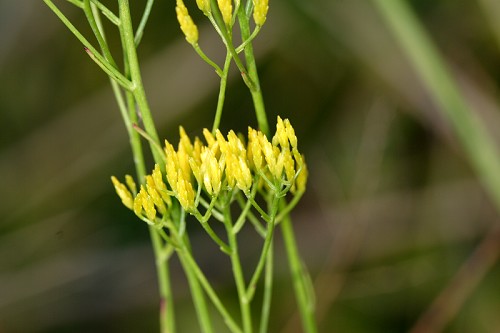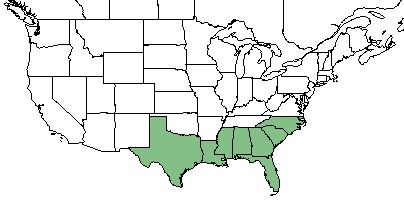Bigelowia nudata
| Bigelowia nudata | |
|---|---|

| |
| Photo from the Southeastern Flora Plant Database | |
| Scientific classification | |
| Kingdom: | Plantae |
| Division: | Magnoliophyta - Flowering plants |
| Class: | Magnoliopsida - Dicots |
| Order: | Asterales |
| Family: | Asteraceae |
| Genus: | Bigelowia |
| Species: | B. nudata |
| Binomial name | |
| Bigelowia nudata (Michx.) | |

| |
| Natural range of Bigelowia nudata from USDA NRCS Plants Database. | |
Contents
Taxonomic Notes
Synonyms: Chondrophora nudata
Varieties: Bigelowia nudata var. australis, Bigelowia nudata var. nudata
Description
B. nudata, also known as the pineland rayless goldenrod, is a native perennial forb that is a member of the Asteraceae family [1]. The species also consists of rhizomes which it uses to propogate [2].
Distribution
B. nudata is found in the Southeast United States, ranging from Texas to North Carolina [1]. However, it is most frequent along the coast lines of lower Mississippi to North Carolina [2].
Ecology
Habitat
B. nudata can be found in moist sandy loams of savannahs, pine barrens, and margins of swamps as well as rich sandy soils in wet prairies and open pinelands [2]. It is a wide-ranging species, mainly occurring in wet to mesic habitats [3].
Associated species - Linum macrocarpum C. M. Rogers, Lophiola aurea Ker Gawl., Sarracenia alata Alph. Wood, Lachnocaulon digynum Koern., Magnolia virginiana L., and Scleria baldwinii (Torr.) Steud. [4].
Phenology
It flowers twice a year, in the spring as well as the fall ranging from October to May [2].
Conservation and Management
Cultivation and restoration
Photo Gallery
References and notes
- ↑ 1.0 1.1 USDA Plants Database URL: https://plants.usda.gov/core/profile?symbol=BINU
- ↑ 2.0 2.1 2.2 2.3 Anderson, L. C. (1970). "Studies on Bigelowia (Asteraceae, Compositae). 1. Morphology and Taxonomy." Sida 3(7): 451-465.
- ↑ Anderson, L. C. (1977). "Studies on Bigelowia (Asteraceae). III. Cytotaxonomy and Biogeography." Systematic Botany 2(3): 209-218.
- ↑ Need Name